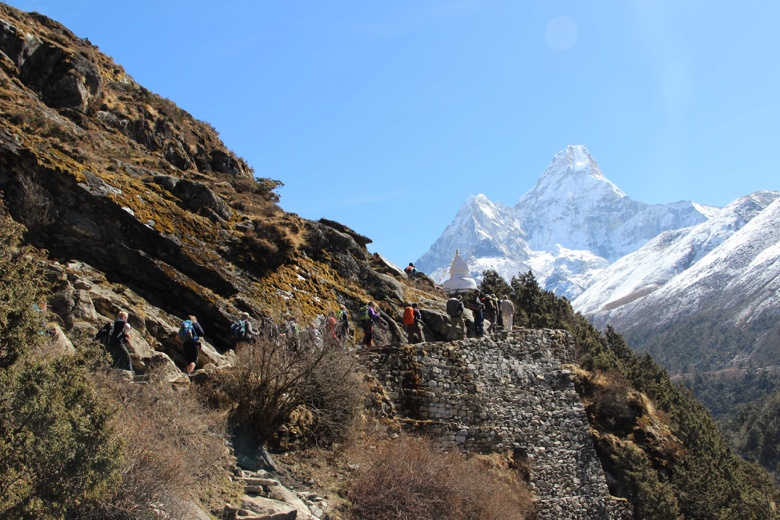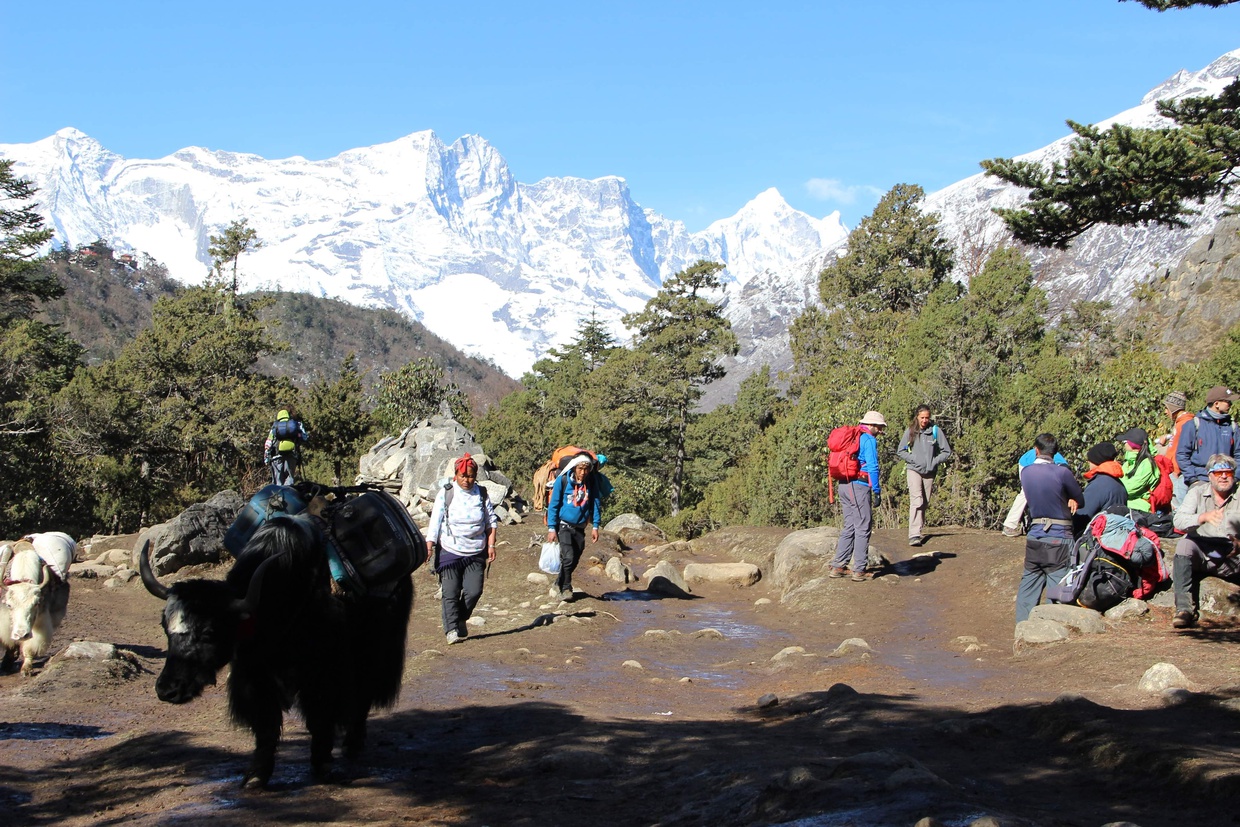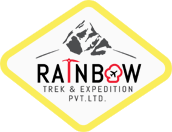Preparing for your trek to Everest Base Camp: A complete checklist
Everything you need to know about trekking to Everest Base Camp. Get the most valuable tips on how to plan your next adventure to the base of the top of the world.
Nepal is home to eight out of 14 mountain peaks of the world that have an elevation of above 8,000 meters (collectively referred to as Eight-thousanders). Therefore, it is no wonder that the country attracts thousands of visitors every year to experience the beauty of the serene mountains. One of the most popular destinations for trekkers and adventure seekers is Everest Base Camp.

The trek to Everest Base Camp is the experience of a lifetime, a journey that takes trekkers through the most beautiful terrain, crossing bridges over rivers, and through forests of rhododendron and pine trees. The Everest Base Camp is a must-see destination for anyone who loves to travel and explore new places.
The trek to Everest Base Camp starts from Kathmandu, the capital city of Nepal. Kathmandu is a city that is rich in history and culture, with many temples, monasteries, and stupas that are a testament to the country's rich history. From Kathmandu, trekkers take a flight to Lukla airport. The trek starts and ends at Lukla which is a small town with a population of little less than 2000 people.
Although quite challenging, the journey from Lukla to Everest Base Camp is worthwhile for adventure seekers because of the astonishingly impressive scenery along the way. Trekkers pass through many traditional Sherpa villages and see their unique way of life. The trail passes through some of the most beautiful landscapes on earth, including forests, rivers, and mountains. The view of the Himalayan range is a sight to behold, and it is no wonder that many trekkers consider this area a trekker’s paradise.
The journey from Lukla to Everest Base Camp is a challenging one, and it requires physical fitness and stamina. Trekkers climb up and down mountains, cross rivers, and navigate through difficult terrain. However, the beautiful scenery along the way makes it all worthwhile. The trek takes trekkers through the Sagarmatha National Park (SNP), a UNESCO World Heritage Site that is home to many rare species of flora and fauna. SNP is house to about 118 species of birds which are found only in this region of the world. Nepal’s national bird called Lophophorous, Impeyen Pheasant is found in the Himalayan region at altitudes between 2500 to 4000 meters.
Prepare the necessary documentation for the trip and the trek
To travel to Nepal, a valid passport is required. Except for Indian Nationals, all international travelers must obtain a visa to enter Nepal, which can be acquired through the Nepalese Diplomatic Missions (Embassy or Consulate) in their home country or upon arrival at Kathmandu's airport. For those arriving at Tribhuvan International Airport, a short-term visa can be obtained on arrival. Money exchange services are available at the airport to convert your currency into Nepalese rupees. It is recommended to always carry Nepalese rupees since cash transactions are preferred in most places, although cards are widely accepted in larger businesses.
For the trek, you will need a Sagarmatha National Park Permit and Trekker’s Information Management System (TIMS) card to enter the park. Your trekking agency can get you these necessary permits.
Make sure to check the latest visa information with Department of Immigration before your travel or consult with your trekking agency.
Why is Everest Base Camp trek considered a spiritual, religious and cultural journey?
The trek to Everest Base Camp is more than just a journey through the mountains; it is also a spiritual journey. The spiritual ambience of the area is awe-inspiring. It takes determination, discipline, patience and resilience to accomplish the journey to the base of Mount Everest, which are strong traits of various spiritual beliefs. It is a journey which cultivates a sense of mindfulness and meaning to existence for many, making it a profound experience.
The region is considered a Tibetan pilgrimage, and trekkers can explore numerous monasteries and temples along the way. The trekkers will encounter Buddhist prayer flags adorned with symbols and prayers of Buddhism. The flags are predominantly composed of five colors – blue, white, red, green, and yellow – which are believed to signify the five elements of nature – sky, air, fire, water, and earth respectively. The core values and principles of Buddhism and its flags are intimately linked to nature.
The trek passes through several small villages that serve as homes to Sherpas and Tibetans. Sherpas have developed a unique way of life which helps them acclimatize to the high-altitude region where the air is thin. Their gradual process of ascent and rest aids them in this process. It is believed that over the course of human history, Sherpa’s genetic components have evolved differently than a normal human who does not live in altitude, giving them an advantage to adapt to high altitude more easily. They have deep respect for mountains and consider them sacred places. Their mountaineering skills have been instrumental in completing numerous successful expeditions to the world’s highest peaks.
Why you should always book with a registered trekking agent?
Planning is crucial for a successful trek to Everest Base Camp, and it starts right from your arrival at Tribhuwan International Airport in Kathmandu. To ensure a seamless trekking experience, it's highly recommended to book with an experienced trekking agent like Rainbow Trek & Expedition. With decades of experience in the trekking industry, they can provide you with a well-organized and unforgettable trekking experience.
The journey to Everest Base Camp is not an easy one and requires careful planning. Trekkers are advised to hire a guide to ensure their safety. A guide can provide valuable information about the area, and they can also help trekkers with the logistics of the journey. They can also help with acclimatization, which is crucial for trekkers as they climb higher into the mountains. We will provide you with our best travel guide who does this on a daily basis.
Whether it is preparing the right gears for the trek, or acclimatizing to high altitude, or overcoming language barrier, you need to ensure that you have somebody by your side to answer all the questions you have during your journey.
What can you eat during your trek to Everest Base Camp?
The trek to Everest Base Camp is a challenging and exhilarating journey. As trekkers ascend to higher altitudes, acclimating to the elevation becomes essential. One way to help with acclimation is to eat the right foods. The locals of the region have developed a nutritious diet that is high in carbohydrates and low in fat which helps them cope with the high altitude. The carbohydrates provide the energy required to trek at high altitudes, while the low-fat diet helps with digestion..
One of the staple and traditional foods of the region is rice with lentils, vegetables and pickles. It is a highly nutritious meal that provides the body with the required carbohydrates and proteins. The dish is also easy to digest, making it ideal for trekking.
Another popular food item is momos, a type of dumpling that is filled with vegetables or meat. Momos are high in carbohydrates and protein and are also easy to digest, making them an excellent food option for trekkers. You can get varieties of momo – the variety can range from the ingredients used to the method of cooking. You can eat steamed, deep fried, shallow fried on pots, chilly momos, and soup momo. A dipping sauce that normally comes with momo, make it icing on the cake.
Another common food is thukkpa. It’s a noddle soup with lots of vegetables and/or meat. It is perfect food for cold climate, as is served hot. It is rich in carbohydrates and is also easy to digest.
Tea is available everywhere along the route. Tea is a very common drink in Nepal, it’s a socializing drink for Nepalese people.
Tea houses offer different menus for foods that they normally prepare on a routine basis for the trekkers. If you have dietary restriction or preference, you may be able to custom order other available foods outside the menu.
In addition, trekkers should also consume lots of fruits, nuts, and vegetables. These foods are high in nutrients and vitamins that help the body cope with high altitude.
What gears should I bring to my trek to Everest Base Camp?
Along with the right food, it is crucial for trekkers to carry the right gears to ensure a comfortable and safe trekking experience. One of the most crucial items is a sturdy pair of trekking shoes with good grip and adequate support to the feet. It is also essential to wear comfortable socks that can keep the feet warm and dry.
Another necessary item is a backpack that is big enough to carry all the essentials, such as water, snacks, and extra clothing. The backpack should have adjustable straps for a comfortable fit.
A warm waterproof and windproof jacket, gloves, hat, sunscreen, sunglass, a small first-aid kit are also essential items to bring along on the trek. A small portable water filter or some water purification pills to have access to clean water all the time during the trek is also recommended.
Other gears such as trekking poles, a sleeping bag and headlamp are available to rent at Namche Bazaar.
If you have questions about what gears & clothes to bring, you can always talk to your trekking agent.
Landscape experience along your trek to Everest Base Camp
Nepal is a country of incredible natural beauty, and one of the best ways to experience its stunning landscapes is through a trek to Everest Base Camp. The journey begins with a flight from Kathmandu to Lukla, followed by a trek through the Himalayan Mountains to the base of the world's highest peak, Mount Everest. Along the way, trekkers are treated to breathtaking views of Nepal's diverse landscapes.
Landscapes while flying from Kathmandu to Lukla
The flight from Kathmandu to Lukla is a memorable experience in itself. The flight takes off from Kathmandu's domestic airport, and as the plane ascends, trekkers are treated to a stunning view of the city's bustling streets and ancient temples. As the plane reaches the outskirts of the city, the landscape transforms into lush green hills and terraced farmland.
As the flight continues, the landscape becomes increasingly mountainous, with towering peaks rising from the horizon above the cloudy sky. Trekkers can spot several of Nepal's highest peaks, including Cho Oyu, Lhotse, and Makalu, as the plane approaches the small town of Lukla. The flight lands at the Tenzing-Hillary airport in Lukla, a small runway perched on a cliff at an altitude of 2,860 meters (9,383 feet). The runway at Lukla Airport is about 527 meters long, making it one of the shortest runways in the worlds. Only highly experienced pilots are given clearance to land the aircraft at this airport.
Landscapes While Trekking from Lukla to Everest Base Camp
The first leg of the trek takes the trekkers through the Dudh Koshi River valley, a lush green landscape with cascading waterfalls and colorful prayer flags adorning the trails. As trekkers ascend higher, the landscape changes to alpine forests, with towering pine trees and rhododendron flowers in full bloom. Trekkers can spot a variety of wildlife, including musk deer, Himalayan thar, and the elusive snow leopard.
As trekkers climb higher, the landscape transforms into rocky terrain, with towering cliffs and glacial moraines. The trek takes trekkers through several high-altitude mountain passes, including the famous Cho La pass, with stunning views of the surrounding Himalayan peaks.

The final leg of the trek leads trekkers to the base of Mount Everest, the highest peak in the world. The landscape at Everest Base Camp is a barren and rocky terrain, with towering ice cliffs and glaciers. Trekkers can spot several other towering peaks from the base camp, including Lhotse, Nuptse, and Ama Dablam.
How to get airfare tickets to Nepal and find best travel agent to plan for the trek
Check multiple airlines and online travel agencies: Look for flight deals on various airlines and online travel agencies like Expedia, Kayak and Skyscanner and so on. Compare the prices and choose the one that suits your budget:
Expedia Travel: Vacation Homes, Hotels, Car Rentals, Flights & More
Search Flights, Hotels & Rental Cars | KAYAK
Compare Cheap Flights & Book Airline Tickets to Everywhere | Skyscanner
Book Flights & Travel the World | Qatar Airways
Are you ready to book you next adventure to Everest Base Camp and need to know how to book your fight ? Contact us and we will help you with everything you need for this trip.

Share This Post